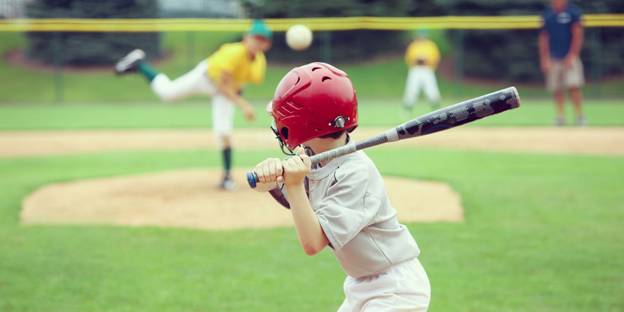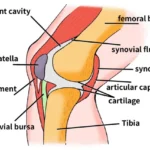Introduction
Preventing arm injuries in children and teens is crucial as they are highly active and engage in various physical activities, from sports to playground play. Proper precautions and guidance can significantly reduce the risk of injuries, allowing children to stay safe while enjoying their activities. This comprehensive guide covers various strategies to prevent arm injuries in young athletes and active children, including safety tips, proper equipment use, and guidelines for parents and coaches.
Understanding the Risk Factors
Common Causes of Arm Injuries
Arm injuries in children and teens can result from various activities, with sports being a significant contributor. Common causes include improper training, lack of appropriate safety gear, overuse, and accidents during play. Sports like baseball, basketball, and gymnastics are particularly associated with arm injuries due to repetitive motions and physical contact.
Identifying High-Risk Activities
Activities that involve high impact or repetitive strain on the arms, such as pitching in baseball, can lead to injuries like sprains, fractures, or overuse injuries. Recognizing these high-risk activities can help in taking preventive measures.
Importance of Proper Equipment
Protective Gear
Using the right protective equipment is essential in preventing arm injuries. Helmets, wrist guards, elbow pads, and proper footwear can provide the necessary protection. Ensure that all gear fits correctly and is in good condition, as worn-out equipment may not offer adequate protection.
Regular Equipment Checks
It’s important to regularly check and maintain sports equipment, such as baseball gloves, bats, and helmets, to ensure they are safe to use. Faulty or damaged equipment can increase the risk of injury.
Training and Conditioning
Pre-Season Preparation
Before the sports season begins, children should gradually build up their physical fitness. This includes cardiovascular exercises, strength training, and flexibility exercises to prepare their bodies for the demands of the sport.
Warm-Up and Cool-Down Routines
Warming up before engaging in physical activity helps increase blood flow to the muscles, making them more flexible and less prone to injury. Cooling down after activities helps in muscle recovery and reduces soreness.
Cross-Training
Encourage cross-training by involving children in different sports or physical activities. This helps in preventing overuse injuries by not continuously stressing the same muscles and joints.
Proper Technique and Coaching
Learning Correct Techniques
Proper technique is crucial in preventing injuries. Coaches should ensure that children are taught the correct way to perform activities, such as throwing a baseball or tackling in football, to minimize the risk of injury.
Qualified Coaching
Ensure that coaches are well-trained and emphasize safety over winning. A coach who prioritizes proper technique and injury prevention can significantly reduce the risk of injuries among young athletes.
Rest and Recovery
Importance of Rest
Adequate rest is vital for preventing overuse injuries. Children should have at least one day off per week from sports to allow their bodies to recover. Overtraining can lead to chronic injuries that might require extended recovery periods.
Recognizing and Addressing Pain Early
Children should be taught to listen to their bodies and report any pain or discomfort immediately. Playing through pain can lead to more severe injuries and prolonged recovery times.
Nutrition and Hydration
Balanced Diet
A well-balanced diet that includes plenty of fruits, vegetables, lean proteins, and whole grains is essential for maintaining the overall health and strength of bones and muscles. Proper nutrition supports recovery and reduces the risk of injury.
Staying Hydrated
Hydration is crucial, especially during physical activities. Encourage children to drink water before, during, and after exercise to prevent dehydration, which can lead to fatigue and increase the risk of injury.
Role of Parents and Guardians
Monitoring and Support
Parents play a key role in preventing injuries by monitoring their children’s activities, ensuring they use the right equipment, and encouraging them to follow safety guidelines. Parents should also communicate with coaches about any concerns regarding their child’s health and safety.
Setting a Good Example
Parents should set a good example by following safety practices themselves. This includes wearing protective gear during activities and promoting a balanced lifestyle that includes adequate rest and nutrition.
Frequently Asked Questions (FAQs)
Q1: What are the most common arm injuries in children and teens?
- A: The most common arm injuries include sprains, strains, fractures, and overuse injuries such as tendonitis. These injuries often occur during sports activities or falls.
Q2: How can I tell if my child has an arm injury?
- A: Signs of an arm injury include pain, swelling, bruising, and difficulty moving the arm. If your child complains of these symptoms, it’s important to seek medical advice.
Q3: How can I prevent my child from getting an arm injury during sports?
- A: Ensure your child uses proper protective equipment, follows warm-up and cool-down routines, and receives coaching on correct techniques. Additionally, encourage them to rest adequately between activities.
Q4: What should I do if my child complains of arm pain?
- A: If your child complains of arm pain, stop the activity immediately and apply ice to the affected area. If the pain persists or worsens, consult a healthcare professional.
Q5: Is it safe for my child to play sports with a minor arm injury?
- A: It is not recommended to allow your child to play sports with an injury, even if it seems minor. Continuing to play can exacerbate the injury and lead to more serious complications.
Conclusion
Preventing arm injuries in children and teens requires a multifaceted approach that includes proper training, the use of appropriate equipment, and fostering a culture of safety both on and off the field. By following these guidelines and being proactive in injury prevention, you can help your child enjoy physical activities while minimizing the risk of injury.
This guide has been developed using insights from trusted sources such as Johns Hopkins Medicine, Seattle Children’s Hospital, and the American Academy of Family Physicians.





